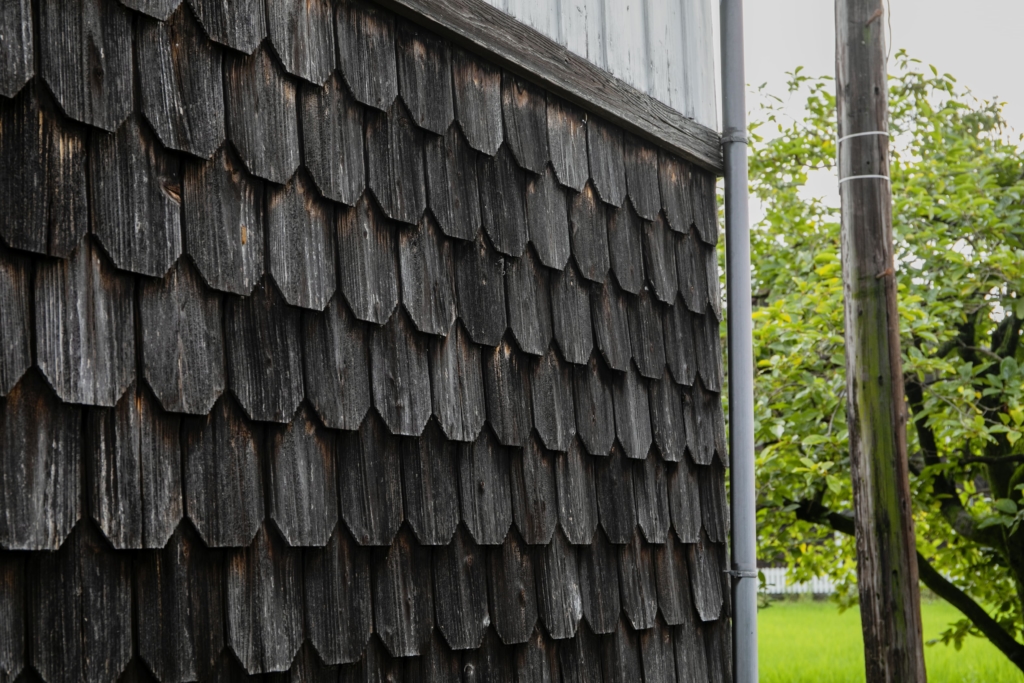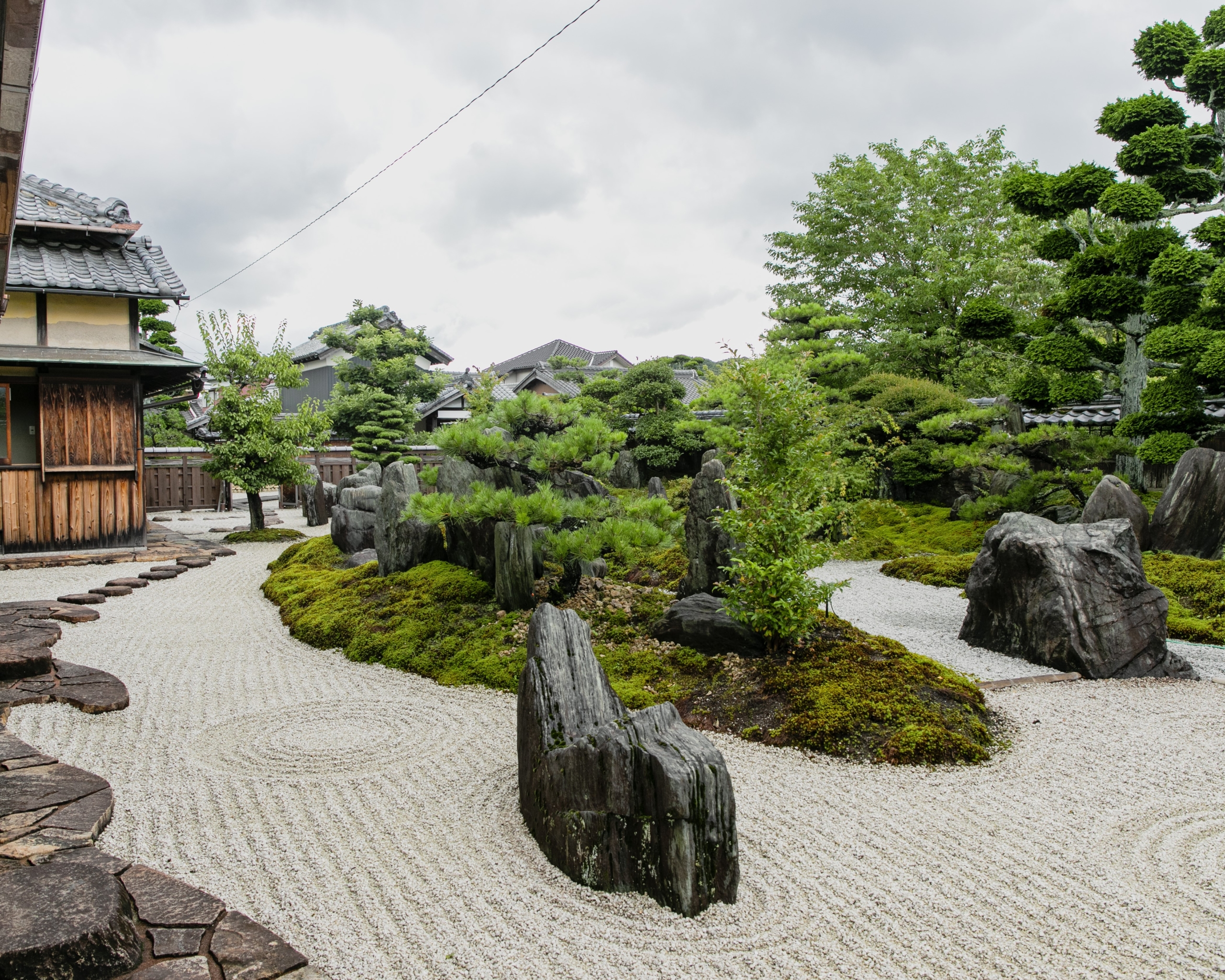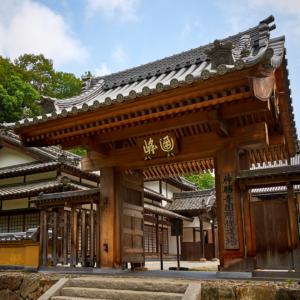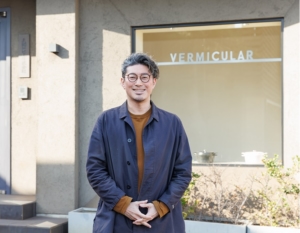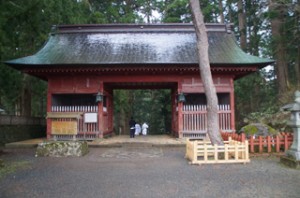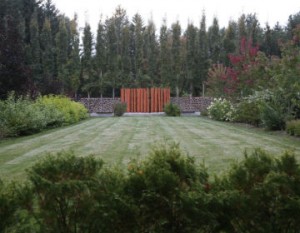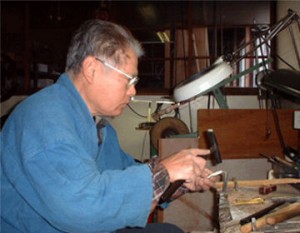One of the most popular tourist spots: Komono Yokoyama Residence Garden
Located in the eastern foothills of the Suzuka Mountains on the border with Shiga Prefecture in northern Mie Prefecture, the town of Komono is one of the most popular tourist spots in Mie Prefecture, where you can enjoy the rich natural scenery of the four seasons, and is home to Yunoyama Hot Springs, known for its 1300 year-old hot springs. In this beautiful town, the Komono Yokoyama Teien, a traditional Japanese residence, is registered as a Tangible Cultural Property of Japan. The Yokoyama teien in Komono-cho, whose architecture is registered as a national tangible cultural property and whose garden is a registered monument, is currently closed to the public but can be viewed by participating in tours that are held several times a year. The history of not only the mansion but also its owner, the Yokoyama family, is long. The Yokoyama family served the Ise-mamoru Kitabatake family in the Muromachi period (1336-1573), the Komono clan in the Edo period (1603-1868), and the headman in the Meiji period (1868-1912). In the Taisho era (1912-1926), the Yokoyama family was a prominent family that even produced a member of the House of Representatives.

Gardens in Mie Prefecture designed by Mirei Shigemori
The main gate of the Komono Yokoyama Residence is located at the end of a stone-paved pathway that extends more than 30 meters. After passing through the passageway lined with well-maintained ibuki trees, visitors pass through the main gate and are confronted with the main building, which is an irimoya-style house with a gabled roof. Between the main gate and the main house, there is a garden in front of the entrance, and a path leading from the gate to the main house is arranged in a karesansui (dry landscape garden).
The entrance garden is neatly organized and welcomes visitors with an elegant atmosphere.
These gardens were completed in June 1968, and were created by the famous gardener Mirei Shigemori. Mr. Shigemori is known for his great achievements as a researcher of Japanese garden history, having conducted a survey of Japanese gardens throughout Japan and compiled the basis for the “Pictorial History of Japanese Gardens,” and he has created about 200 gardens in Japan. His representative works include the Honbo Garden of Tofukuji Temple in Higashiyama-ku, Kyoto, and the Sesshu Garden at Jyoeiji Temple in Yamaguchi Prefecture, which is still loved by many garden lovers. The owner of the house at that time, Mr. Hideyoshi Yokoyama, was fascinated by Shigemori’s works and ideas, and visited him in person without any introduction, which led to the creation of the garden. Mr. Shigemori was so enthusiastic that he agreed to create the garden without hesitation.
In addition to the garden in front of the entrance, there are also an Omoteiwa (front garden) and a Uraba (back garden). The main feature of the Omote-niwa is the expression of the character for “heart” by creating an island in the middle of a karesansui (dry landscape garden) with a moss hill. Other Japanese gardens have also expressed the character for “heart,” but usually in the form of a “heart-shaped pond. For this reason, the Komono Yokoyama Teien is also notable as a garden with a central island in the shape of the character for “heart. The garden stones arranged in the garden are made of Horai-style masonry based on the Horai Shinzen philosophy. The garden depicts boateki arranged in a karesansui (dry landscape garden) that resembles a large ocean with a sandy pattern, heading toward tateishi (standing stones) that resemble the towering Mount Horai. This arrangement expresses the journey of the heart on the boating stones toward Mount Horai.
This garden can be enjoyed from various places such as the entrance garden, the main building, the shoin (drawing room), and the tea ceremony room,
One of the charms of this garden is that it can be seen from various places.
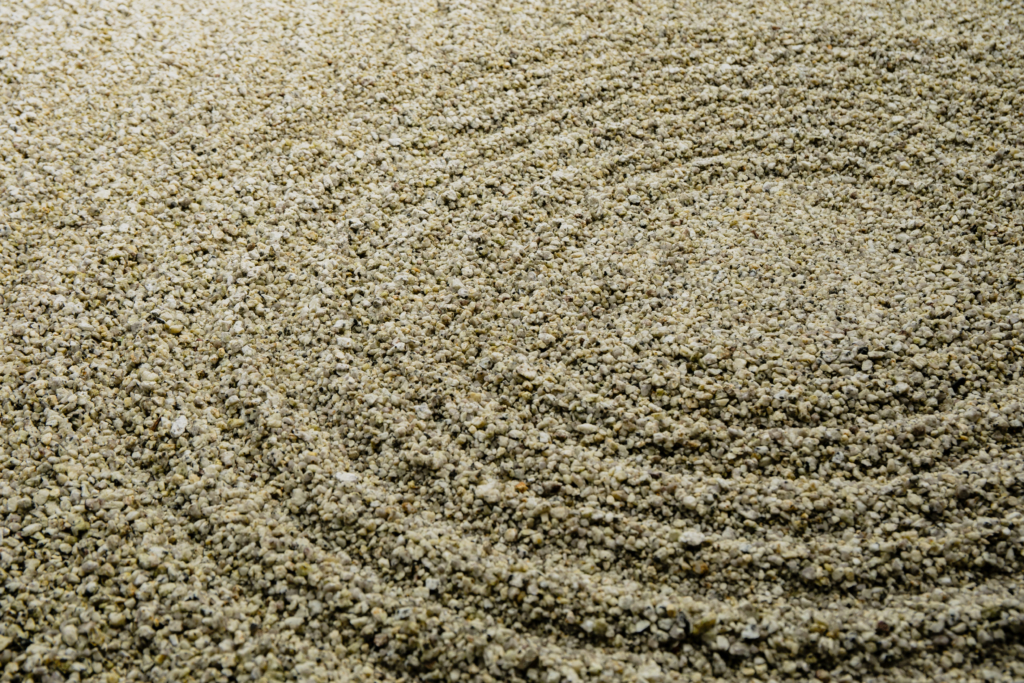
The back garden is a complete change of atmosphere from the traditional front garden, with a more modern style.
Also known as the “Red and White Garden,” the space is divided into several layers diagonally to the house, and is covered with white Shirakawa stones and red Tengu stones.
The backyard represents the rural landscape that Mr. Shigemori saw from the train window when he visited the Yokoyama residence. The veranda, from which one can view the backyard, represents the inside of a train car, the diagonal partition represents the movement of the scenery flowing through the train window, and the red and white stones represent the rice paddies. When Mr. Shigemori visited the Yokoyama residence, the backyard on the north side of the house looked dark and heavy, and he came up with the idea of creating a bright and modern backyard, which led to a sudden change in the original design. From this backyard, one can sense the beautiful original landscape of Komono.
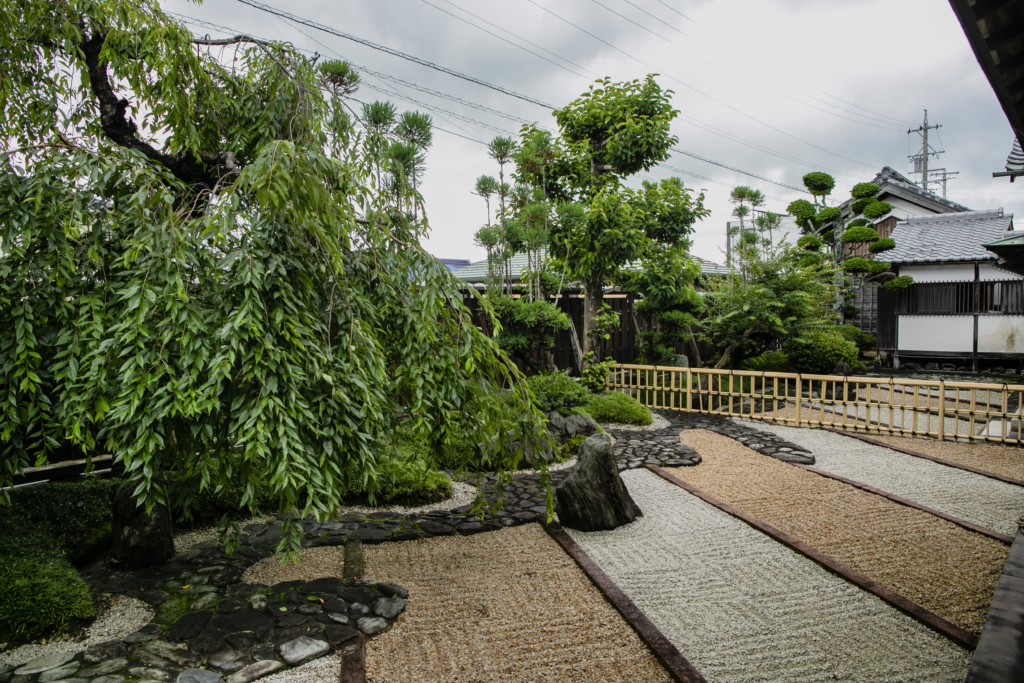
Komono Yokoyama Residence Garden: More than just a garden
The Komono Yokoyama Residence Garden preserves not only a garden but also attractive architecture. On the east side of the main house is a building that was used as a clinic at the time. Inside the building, there is a waiting room, an examination room, and an x-ray room, all of which remind us of its former use as a clinic. The building is a parapet structure with a distinctive exterior wall.
The exterior walls are covered with wooden scale-like boards 1.5 meters high, like the scales of a fish. The distinctive appearance of the building attracts people’s attention, and it is registered as a cultural property for its contribution to the historical landscape of the country.
The Komono Yokoyama Residence also has a tea house called Jinjitsu-an. This tea house was built around the middle of the Meiji period (1868-1912), and is said to have been designed by Shokei Yoshida, the second generation of the Yoshida Shofu-an tea house of the Omotesenke school of tea ceremony in Nagoya. It was moved from the Narita family in Nagoya to the Komono Yokoyama family in 1968.
The adjacent open-air space was also designed by Shigemori, but the interior of the tea house is not open to the public.
In addition to the main gate, main building, infirmary, and tea house, the shoin (drawing room), the cross corridor, and the storehouse are also registered as tangible cultural properties.
The Komono Yokoyama Residence is a historic Japanese house with a relaxing garden.
The garden is a place that takes visitors on a spiritual journey from the traditional architecture to the garden.
